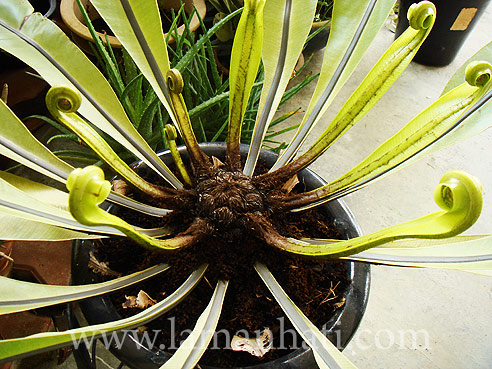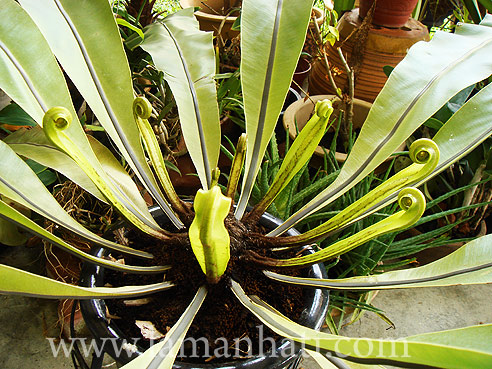Asplenium australasicum – Bird’s Nest Fern
It took me some times to identify the name of this plant. I only know it as Bird’s Nest Fern. But when I did some research, there are actually many species. I hope I get it correctly after reading the description on the page of Australian Native Plants Society (Australia) – ANPSA – Asplenium australasicum.

At first I thought it is Asplenium nidus or Asplenium phyllitidis after reading the page of Tropical Fern and Exotic Plants Society on Bird’s Nest Fern.

It is said in most website that this Asplenium australasicum may be confused with Asplenium nidus. Taken from wikipedia,
“Apparently, most plants sold in America as A. nidus are actually Asplenium australasicum. A. australasicum has longer sori, and the midrib has a different shape.”
Quoting from tfeps.org page,
“A. australasicum is nearly always epiphytic, growing on the limbs and trunk of trees but it will occasionally be found on rocks or even in the ground when a mature plant has fallen. There is a variety that has lobed fronds and is known as A. australasicum ‘ Multilobum’.
As epiphytes, all of these bird’s-nest ferns should be potted in a very coarse mix with great drainage. They should be under-potted to prevent accumulation of too much moisture although double-potting with the outer pot filled with gravel or the like may be necessary to provide a heavy enough base to support the large fronds. They should be lightly fed at frequent intervals during the growing season.”
Oh, Malays call this plant pokok langsuyar which somehow gives a spooky and horror connotation to the ghost of lady with long hair..huhu! One thing I noticed since I grow this plant, it could not stand direct heat and drying sun as the leaves will get tattered, turn brown and withered very fast.
I am yet to try spore propagation. Will share later if and when my Bird’s Nest Fern has spore to propagate..heh!
Hi
Your bird’s nest fern looks very nice and healthy, at least compared to mine.
It was a thrown away and I ‘adopted’ it but it does not have any potting medium on it when I found it.
Care to share the potting mix recipe you are using for your fern? So I could also use the same for my sad fern?
” )
cheers
rumah mak aku ada banyak, n different specias lagik. skang kat rmh aku ada la 2-3 pasu, haha… ihsan dari mak aku jugakla :p